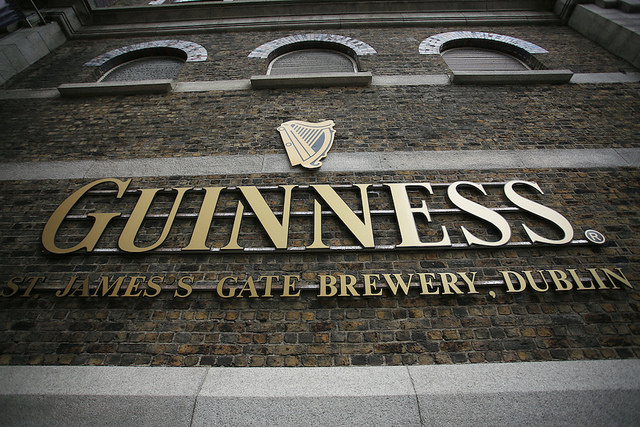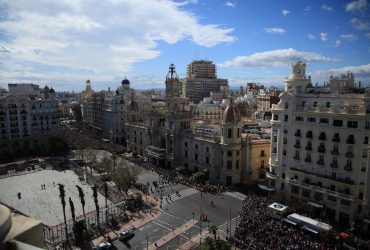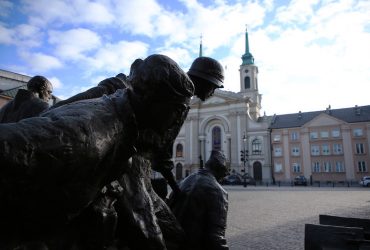Today we are still talking about the Irish capital (I still have a lot to tell you) and, specifically, I want to talk about ten places in Dublin that, in my opinion, you should visit the first time you arrive in this city.
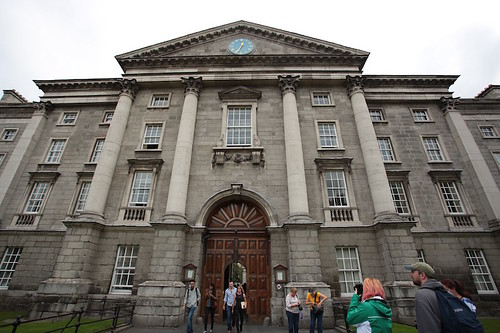 I start from Trinity College, a significant place in Dublin. Its official name is “College of the Holy and Undivided Trinity of Queen Elizabeth near Dublin” and was officially founded in 1592 by Elizabeth I. Among the oldest educational institutions in Ireland, today its prestige is recognised worldwide. Inside the college is located the Old Library, the most extensive library in the country, and its most famous wing is the Long Room, a long corridor of 65 meters that houses over 200 thousand volumes (of 4 million and a half total hosted by the library).
I start from Trinity College, a significant place in Dublin. Its official name is “College of the Holy and Undivided Trinity of Queen Elizabeth near Dublin” and was officially founded in 1592 by Elizabeth I. Among the oldest educational institutions in Ireland, today its prestige is recognised worldwide. Inside the college is located the Old Library, the most extensive library in the country, and its most famous wing is the Long Room, a long corridor of 65 meters that houses over 200 thousand volumes (of 4 million and a half total hosted by the library).
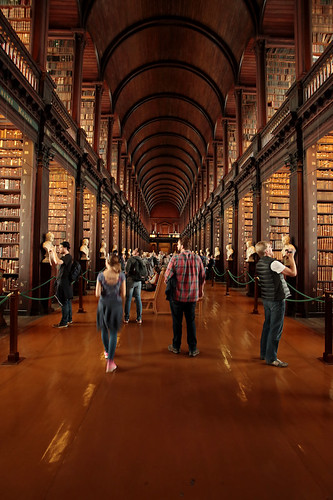 This was built between 1712 and 1732, and a copy of every book published in Great Britain and Ireland is kept here since 1801. Entering the building that houses the library is the Book of Kells (Leabhar Cheanannais in Gaelic), a miniated manuscript, made by Irish monks around 800; it is considered one of the most important works of art of the time for its beauty and the technique used for its realisation. In the book is the text of the four Gospels in Latin, accompanied by introductory and explanatory notes, and accompanied by numerous illustrations and richly coloured miniatures. Unfortunately, it is not possible to take pictures of the book or exhibition in the rooms adjacent to the one where the case with the book is located (it is possible to make it in the Long Room hall). The staff is amicable and don’t worry about externalising any clarifying questions: I noticed that they answered almost everyone! To visit the College you can choose to go by yourself, and admission is free except for the Book of Kells and the Long Room (3 euro ticket), or you can take part in a guided tour with the students of the college (the ticket costs 13 euros for one hour tour). I chose the second option, and the guy who guided us was very good at making the visit interesting and enjoyable. For more information I recommend you to visit the college official website.
This was built between 1712 and 1732, and a copy of every book published in Great Britain and Ireland is kept here since 1801. Entering the building that houses the library is the Book of Kells (Leabhar Cheanannais in Gaelic), a miniated manuscript, made by Irish monks around 800; it is considered one of the most important works of art of the time for its beauty and the technique used for its realisation. In the book is the text of the four Gospels in Latin, accompanied by introductory and explanatory notes, and accompanied by numerous illustrations and richly coloured miniatures. Unfortunately, it is not possible to take pictures of the book or exhibition in the rooms adjacent to the one where the case with the book is located (it is possible to make it in the Long Room hall). The staff is amicable and don’t worry about externalising any clarifying questions: I noticed that they answered almost everyone! To visit the College you can choose to go by yourself, and admission is free except for the Book of Kells and the Long Room (3 euro ticket), or you can take part in a guided tour with the students of the college (the ticket costs 13 euros for one hour tour). I chose the second option, and the guy who guided us was very good at making the visit interesting and enjoyable. For more information I recommend you to visit the college official website.
 Almost opposite Trinity College, at 119 Grafton Street, is the Irish Whiskey Museum: a small museum that tells the story of Whiskey. The entrance ticket costs 16 euros with three samples of Whiskey included or 19 with five tastes included. The visit to the museum can be done with a guided tour (in English), and visitors are taken through the history of Irish whiskey: from the evolution of the distillation methods to the laws that regulated them (and made to change) passing through the various families and Irish whiskey production factories. At the end of the tour you arrive in the tasting room: you will be given a small tray with your tastings, and the guide (the same of the tour) together with the barman will explain the differences between the whiskeys that served you. I found it a very very informative visit from many points of view!
Almost opposite Trinity College, at 119 Grafton Street, is the Irish Whiskey Museum: a small museum that tells the story of Whiskey. The entrance ticket costs 16 euros with three samples of Whiskey included or 19 with five tastes included. The visit to the museum can be done with a guided tour (in English), and visitors are taken through the history of Irish whiskey: from the evolution of the distillation methods to the laws that regulated them (and made to change) passing through the various families and Irish whiskey production factories. At the end of the tour you arrive in the tasting room: you will be given a small tray with your tastings, and the guide (the same of the tour) together with the barman will explain the differences between the whiskeys that served you. I found it a very very informative visit from many points of view!
 For all information, you can consult the museum official website. The small Natural History Museum is located in Merrion Square, and it is a section of the National Museum of Ireland. It’s housed in a Victorian building and is structured on two floors: on the ground floor are Irish animals, while on the first floor are skeletons of animals from all over the world. Very informative, the museum is very appreciated by the family and primarily by the children who seem to have a lot of fun turning for its long rooms.
For all information, you can consult the museum official website. The small Natural History Museum is located in Merrion Square, and it is a section of the National Museum of Ireland. It’s housed in a Victorian building and is structured on two floors: on the ground floor are Irish animals, while on the first floor are skeletons of animals from all over the world. Very informative, the museum is very appreciated by the family and primarily by the children who seem to have a lot of fun turning for its long rooms.
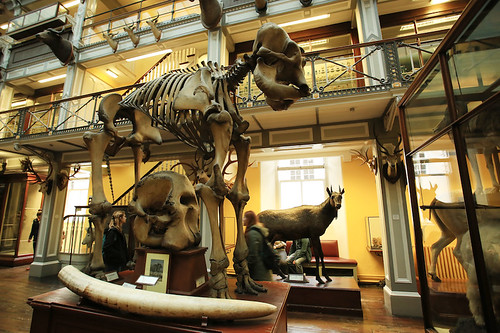 It isn’t possible to go up on the balconies of the second floor, due to the lack of security measures and I appreciated having seen signs announcing work for next year (works that also include a lift for disabled access). Admission is free, and you can take pictures (no video, though). The museum, closed on Sundays, is open Tuesday to Saturday from 10 am to 5 pm and Sunday only in the afternoon, from 2 pm to 5 pm. To visit it, it takes about a couple of hours, and I recommend you visit it because it deserves! (especially the whale skeleton on the second floor).
It isn’t possible to go up on the balconies of the second floor, due to the lack of security measures and I appreciated having seen signs announcing work for next year (works that also include a lift for disabled access). Admission is free, and you can take pictures (no video, though). The museum, closed on Sundays, is open Tuesday to Saturday from 10 am to 5 pm and Sunday only in the afternoon, from 2 pm to 5 pm. To visit it, it takes about a couple of hours, and I recommend you visit it because it deserves! (especially the whale skeleton on the second floor).
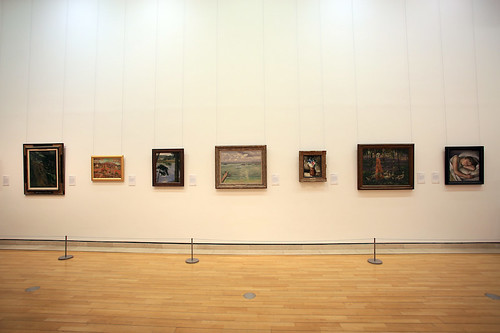 Not far from the Natural History Museum you will find the National Gallery Of Ireland. The main entrance is always in Merrion Square, but unfortunately, it is under renovation like most of the building and, therefore, you enter from Clare street (you can find all the directions, quiet). The things to see in the museum would be a lot (and also beautiful), but unfortunately, in September a large part of the building was under renovation and, therefore, I could see almost nothing. The opening hours are quite regular: from Monday to Saturday from 9:15 to 17:30 on Thursday from 9:15 to 20:30 and on Sunday from 11:00 to 17:30. I link to you, of course, the official museum website, to know when the works will be finished, and the rooms will be reopened (because it is a pity not to be able to see the beauties of this museum).
Not far from the Natural History Museum you will find the National Gallery Of Ireland. The main entrance is always in Merrion Square, but unfortunately, it is under renovation like most of the building and, therefore, you enter from Clare street (you can find all the directions, quiet). The things to see in the museum would be a lot (and also beautiful), but unfortunately, in September a large part of the building was under renovation and, therefore, I could see almost nothing. The opening hours are quite regular: from Monday to Saturday from 9:15 to 17:30 on Thursday from 9:15 to 20:30 and on Sunday from 11:00 to 17:30. I link to you, of course, the official museum website, to know when the works will be finished, and the rooms will be reopened (because it is a pity not to be able to see the beauties of this museum).
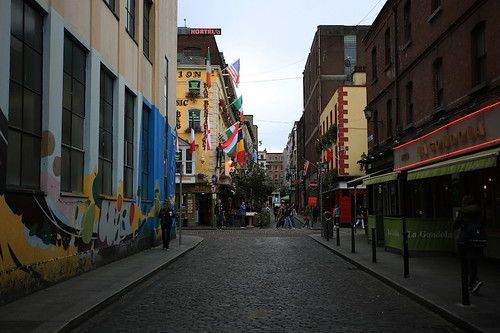 Let’s change location: a walk to Temple Bar is a must during a stay in Dublin. It is the medieval core of the town and perfectly represents the medieval era! Most probably the street named as “Temple Bar” takes its name from the Temple family, who lived in this area in the seventeenth century. It seems that Sir William Temple, who in 1609 was the rector of Trinity College, had the house built in this area and not far from The Bar, a pedestrian promenade along the Liffey (Dublin river).
Let’s change location: a walk to Temple Bar is a must during a stay in Dublin. It is the medieval core of the town and perfectly represents the medieval era! Most probably the street named as “Temple Bar” takes its name from the Temple family, who lived in this area in the seventeenth century. It seems that Sir William Temple, who in 1609 was the rector of Trinity College, had the house built in this area and not far from The Bar, a pedestrian promenade along the Liffey (Dublin river).
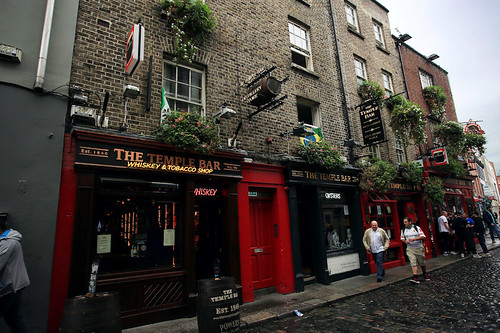 Today, although a very picturesque, typical and lively area, Temple Bar is the tourist area for excellence. The symbol of the neighbourhood? The famous pub “the temple bar” of course! I admit I did not appreciate it very much because of its very tourist character (too much for my taste), but I think that you can not save a walk in the area anyway. And then if I had not come I would have lost the splendid works of street art that decorate the walls of buildings (I told you in the video about the street art in Dublin).
Today, although a very picturesque, typical and lively area, Temple Bar is the tourist area for excellence. The symbol of the neighbourhood? The famous pub “the temple bar” of course! I admit I did not appreciate it very much because of its very tourist character (too much for my taste), but I think that you can not save a walk in the area anyway. And then if I had not come I would have lost the splendid works of street art that decorate the walls of buildings (I told you in the video about the street art in Dublin).
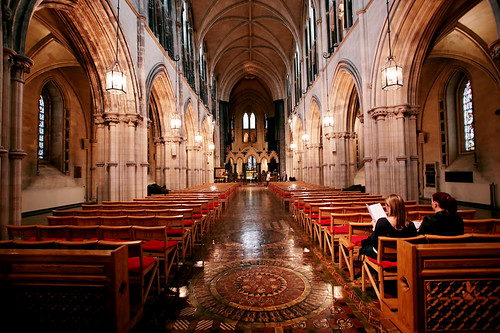 A must when in Dublin is naturally a visit to Christ Church, or Cathedral of the Holy Trinity. Initially, it was built in wood by the will of the first Viking king Sigtrygg Barba di Seta, in 1038 (when the king was converted to Christianity), it was destroyed due to a fire and was rebuilt by the Normans during their domination (to be exact between 1173 and 1240). Later it fell into disrepair and was restored in 1870: thanks to this long restoration, today we can see it in its ancient splendour.
A must when in Dublin is naturally a visit to Christ Church, or Cathedral of the Holy Trinity. Initially, it was built in wood by the will of the first Viking king Sigtrygg Barba di Seta, in 1038 (when the king was converted to Christianity), it was destroyed due to a fire and was rebuilt by the Normans during their domination (to be exact between 1173 and 1240). Later it fell into disrepair and was restored in 1870: thanks to this long restoration, today we can see it in its ancient splendour.
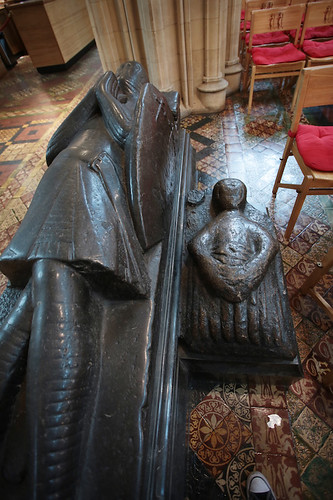 In this church is located the grave of Strongbow, the Irish conqueror. According to legend, the half-figure who is next to the grave is that of the son of Strongbow, torn apart by his father when his courage in battle was questioned. Inside the crypt, there are mummified cats and mice: they are the “ancient inhabitants” of the church. The full ticket costs 6.00 €. For all further information regarding opening hours and other admission ticket prices (discounts and tickets for families or groups), you can consult the official website page.
In this church is located the grave of Strongbow, the Irish conqueror. According to legend, the half-figure who is next to the grave is that of the son of Strongbow, torn apart by his father when his courage in battle was questioned. Inside the crypt, there are mummified cats and mice: they are the “ancient inhabitants” of the church. The full ticket costs 6.00 €. For all further information regarding opening hours and other admission ticket prices (discounts and tickets for families or groups), you can consult the official website page.
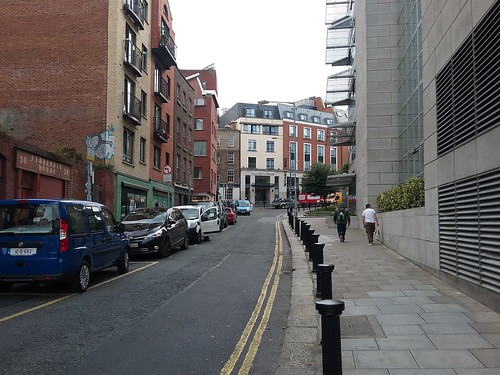 Not far from the church is Fishamble Street. Located always in the old medieval heart of the city, this is the oldest street in Dublin! This road is famous also because here is located the Handel hotel, which in ancient time was a music hall. On April 13th, 1742, the “Messiah” by Haendel was played for the very first time in that music hall. Next to the hotel, there is still the white arch which was the old entrance to the hall. A piece of history of music and the city well hidden in the modern city.
Not far from the church is Fishamble Street. Located always in the old medieval heart of the city, this is the oldest street in Dublin! This road is famous also because here is located the Handel hotel, which in ancient time was a music hall. On April 13th, 1742, the “Messiah” by Haendel was played for the very first time in that music hall. Next to the hotel, there is still the white arch which was the old entrance to the hall. A piece of history of music and the city well hidden in the modern city.
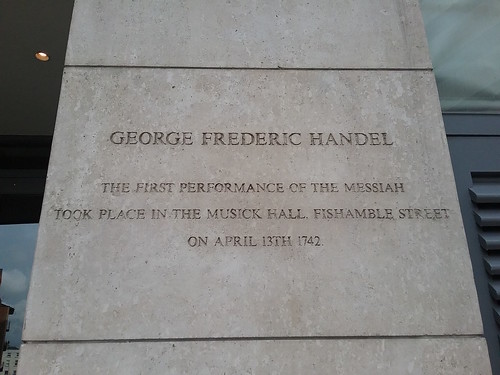
Not far from Christ Church and Fishamble street is located the St. Patrick Cathedral.
 Protestant Cathedral, it seems that it was built where St. Patrick stopped in 450 AD, to baptise the pagans in a well and was built a wooden church for commemoration (one of the four Celtic parishes in Dublin). The first archbishop was John Comyn, and it was with him that, in 1191, Saint Patrick’s was elected as a cathedral. The current building, the largest in the country, was built between 1200 and 1270. Over time the temple suffered damage (quite natural over time), and it was thanks to the Guinness family (yes, that of beer) that was possible to restore it between 1860 and 1900. The choir nave is 100 meters long and is the
Protestant Cathedral, it seems that it was built where St. Patrick stopped in 450 AD, to baptise the pagans in a well and was built a wooden church for commemoration (one of the four Celtic parishes in Dublin). The first archbishop was John Comyn, and it was with him that, in 1191, Saint Patrick’s was elected as a cathedral. The current building, the largest in the country, was built between 1200 and 1270. Over time the temple suffered damage (quite natural over time), and it was thanks to the Guinness family (yes, that of beer) that was possible to restore it between 1860 and 1900. The choir nave is 100 meters long and is the
 longest in Ireland. Just inside St Patrick, you will find the tomb of Jonathan Swift, the author of Gulliver’s Travels. There is also the statue of Benjamin Guinness, who was the first member of the famous family to prove interested in preserving the cathedral itself. The entrance ticket costs € 6.00 (€ 5.00 for students). Of course, St Patrick also has an official website that you can consult for all the information you might need (there is also public transport that you can use to reach this Church).
longest in Ireland. Just inside St Patrick, you will find the tomb of Jonathan Swift, the author of Gulliver’s Travels. There is also the statue of Benjamin Guinness, who was the first member of the famous family to prove interested in preserving the cathedral itself. The entrance ticket costs € 6.00 (€ 5.00 for students). Of course, St Patrick also has an official website that you can consult for all the information you might need (there is also public transport that you can use to reach this Church).
 The best way to conclude this post? I think with a visit to the Guinness Storehouse, the factory of the famous Irish beer! The museum is spread over seven floors and tells the story of the factory and how the historic beer is produced, taking visitors to follow a “more or less” route. I advise you to take the audio guide (€ 1) that allows you to follow the path through the history of the factory (and vice versa). There are various dining options where you can have a drink and eat, both sweet and savoury, and I suggest you stop at the gravity bar on the top floor: the view is phantasmagoric! The fun part of the visit? That through the section on all
The best way to conclude this post? I think with a visit to the Guinness Storehouse, the factory of the famous Irish beer! The museum is spread over seven floors and tells the story of the factory and how the historic beer is produced, taking visitors to follow a “more or less” route. I advise you to take the audio guide (€ 1) that allows you to follow the path through the history of the factory (and vice versa). There are various dining options where you can have a drink and eat, both sweet and savoury, and I suggest you stop at the gravity bar on the top floor: the view is phantasmagoric! The fun part of the visit? That through the section on all
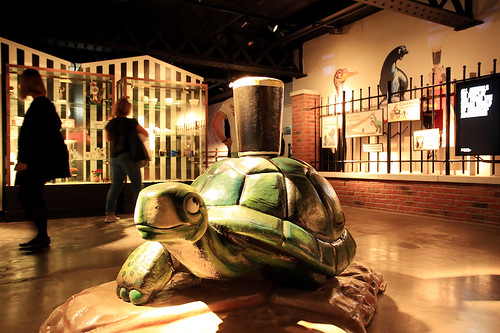 Guinnes advertising through time! Don’t forget to go through the tasting room, where you will learn how to taste a beer. Finally, a little curiosity: in the vast space located just after the ticket offices, in front of the entrance of the large shop, is the lease of the factory: we’re talking about a contract lasting 9000 years! (Yes, you read correctly: 9000). Hours: every day from 9.30 to 17 (last admission at 17).
Guinnes advertising through time! Don’t forget to go through the tasting room, where you will learn how to taste a beer. Finally, a little curiosity: in the vast space located just after the ticket offices, in front of the entrance of the large shop, is the lease of the factory: we’re talking about a contract lasting 9000 years! (Yes, you read correctly: 9000). Hours: every day from 9.30 to 17 (last admission at 17).
 In July and August, the museum closes at 7 pm.
In July and August, the museum closes at 7 pm.
Entrance fee: Adults 20 €.
Discounts: if you buy it online (18 €, 10% discount) or in conjunction with City Sightseeing Bus tickets.
Students over 18 years: 18.00 €
Over 65: 18.00 €
A pint of Guinness is included in the ticket (for children under 18, an alcohol-free drink).
For more information, even in this case, I recommend you visit the museum website.
Ten places to visit in Dublin
